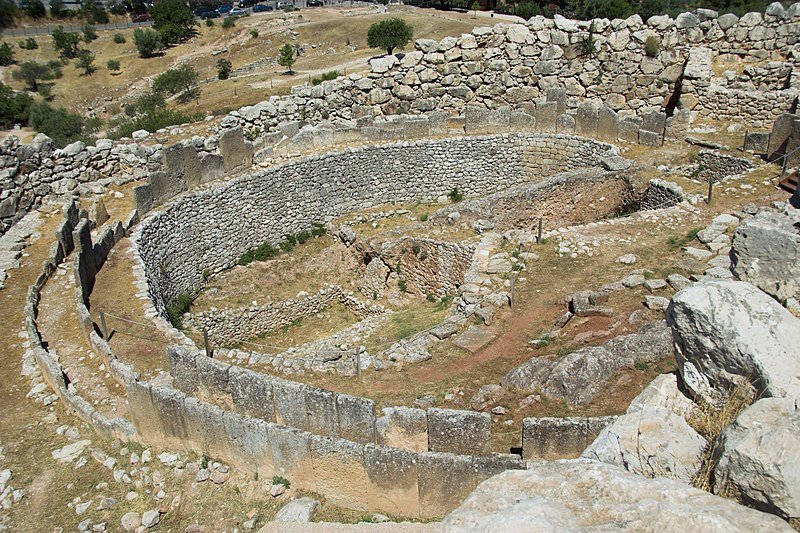Mycenae Kingdom: Home To King Agamemnon And Tholos Tomb ‘Treasure of Atreus’
A. Sutherland - AncientPages.com - One of the greatest civilizations of Greek prehistory was the Mycenaean civilization, famous for its majestic architecture and monuments with a grand and impressive appearance.
Grave Circle A, Mycenae. Image credit: Zde - CC BY-SA 4.0
Mycenae, one of Greece's most significant archaeological sites, lies on the route between Nafplio and Corinth, approximately 90 km from Athens.
It was here that the so-called Mycenaean civilization originated, the oldest known European script (linear script B). Another association with this famous ancient site is Agamemnon's golden funeral mask and the so-called Trojan War when the local King Agamemnon of Mycenae set out against Troy.
When Menelaus's wife, Helen, was taken to Troy by Paris, Agamemnon commanded the united Greek armed forces in the ensuing Trojan War. His goal was to avenge his brother Menelaus. As we know, Helen was already married to King Menelaus of Sparta, so Paris had to raid Menelaus's house to steal Helen from him. However, according to some other accounts, this beautiful woman fell in love with Paris and left her husband willingly.
The Spartans' expedition to retrieve Helen from Paris in Troy is the mythological basis of the Trojan War.
A clay tablet from Mycenae, with writing in Linear B. Image credit: Marsyas - CC BY 2.5
The Mycenaean civilization, which, according to legend, had been ruled by King Agamemnon, the conqueror of Troy, appeared suddenly in southern and central Greece in about 1600 BC. The civilization would grow to prominence and become one of the most dominant civilizations of the Aegean for hundreds of years.
Greece's most prosperous luxurious center of the Late Bronze Age has inspired poets and writers for centuries. It was a magnificent place built on a low plateau between two tall hills overlooking the Argive plain. The center had a perfect strategic location allowing it to develop into a military stronghold that dominated much of Southern Greece.
The construction of the palace and fortification wall currently visible began in c. 1350 BC. About one hundred years later, a new fence was erected to the west and south of the early ones, together with the Lion Gate, the citadel's monumental entrance, and its bastion.
The city's religious center was included in the newly fortified area.
Famous Tholos Tomb - 'Treasure of Atreus'
The famous tholos tomb is known as the 'Treasure of Atreus,' (or Tomb of Agamemnon) with gigantic lintels and tall beehive vault, which was probably constructed during the same period.
Lion gate in Mycenae. Image credit: Rokaszil - CC BY-SA 3.0
This vaulted stone structure - is one of the most famous buildings of Mycenae. A small path of 36 meters leads to the entrance of the tomb, which has a triangular lintel stone above the doorway, weighing about 120 tons. When Heinrich Schliemann (1822-1890) came to Mycenae in 1879, the grave (partly visible) was already looted centuries ago.
The tomb's interior creates a fascinating echo, and the ceiling is vaulted. Constructed in about 1250 BC, the Treasury of Atreus is 13.5 meters high and has a diameter of 14.5 meters.
This still spectacular landmark - remained the tallest dome for many centuries until the construction of the Pantheon appeared in ancient Rome.
Interestingly, the famous tomb was decorated with green alabaster and red porphyry, considered unique painting colors for that time.
Destructions And Fires Led To Abandonment Of Mycenae
Successive destructions and fires led to the site's final abandonment in c. 1100 BC. After the collapse of the palatial complex, the hill was only sparsely inhabited until the Classical period. In the eighteenth and nineteenth centuries, the impressive Cyclopean walls of the Mycenaean Acropolis attracted many travelers, some of whom unfortunately even looted the site.
Corbelled Arch, Entrance to the Treasury of Atreus, Mykene, Greece. Image credit: Ken Russell Salvador - CC BY 2.0
Legends say that the Greeks besieged the city but had serious troubles taking it. Temporarily, it seemed that the construction of a large wooden horse that was issued to be a gift to the Trojans would settle the conflict in favor of the Greeks. Instead, this unique gift was a hiding place for warriors.
When unsuspecting Trojans dragged the wooden horse inside, after dark, the Greek warriors could get out of the horse along with the rest of the army. The subsequent attack led to a Trojan defeat, and the city was rampaged.
Another well-known name associated with the Mycenaeans is Heinrich Schliemann, a German amateur archaeologist who, as a young boy, dreamed of discovering the mythical Troy once. His dreams (in a way) came true for him because he uncovered a Bronze Age walled citadel that would be identified as the ancient city of Troy.
In addition to this discovery, which gave Homer's epics a factual basis, Schliemann also unearthed Mycenae in 1874. However, only Homer's words about "an excellent city abounding in wealth and gold" were confirmed here. Later excavations revealed the ruins of the Acropolis (also known as the Mycenaean Citadel), along with the remains of the palace and richly equipped glass and chamber tombs.
Among the findings in the tombs were luxury weapons, a gold burial mask that probably once belonged to Agamemnon himself, and other magnificent beaten gold burial masks.
Museum replicas of Mycenaean swords and cups. Image credit: Ruth van Mierlo - CC BY 2.5
Other artifacts from Mycenae included jewelry pieces like gold diadems, carved rings, cups, a gold rhyton in the form of a bull's head, large bronze swords, and daggers with richly inlaid scenes on their blades. An ivory sculpture and fresco fragments testify to the quality of craftsmanship and wealth of 'golden Mycenae.'
The ruins also revealed many houses outside the citadel, fifty tablets covered with the linear letter B, and clay statues. Several of Schiemann's archaeological discoveries were controversial items, of which authenticity is still much debated today
However, especially one of the 1876 excavations brought a sensation. A richly equipped tomb was found with the well-preserved remains of one of the three people buried in it. The head of one of the individuals still had skin and tendons so that one could recognize the facial features.
The remains were transported to the museum in Athens for further examinations and reconstruction of the head. However, this attempt failed because the bones could not withstand contact with air and transport.
Written by – A. Sutherland - AncientPages.com Senior Staff Writer
Copyright © AncientPages.com All rights reserved. This material may not be published, broadcast, rewritten or redistributed in whole or part without the express written permission of AncientPages.com
Expand for referencesReferences:
Expand for references
Schofield L. The Mycenaeans
Jorrit M. Kelder, The Kingdom of Mycenae
Priam’s Treasure – Authentic Trove From Homeric Troy Or Deception?
More From Ancient Pages
-
 Voynich Manuscript: Ancient Book Nobody Is Able To Read
Artifacts | Jun 24, 2013
Voynich Manuscript: Ancient Book Nobody Is Able To Read
Artifacts | Jun 24, 2013 -
 Viking Treasures Discovered In Chamber Grave In Denmark
Archaeology | Apr 4, 2017
Viking Treasures Discovered In Chamber Grave In Denmark
Archaeology | Apr 4, 2017 -
 Something Never-Before-Seen Is Hidden Beneath 15 Giant Viking Burial Mounds Spotted By Radar In Norway
Archaeology | Jan 19, 2021
Something Never-Before-Seen Is Hidden Beneath 15 Giant Viking Burial Mounds Spotted By Radar In Norway
Archaeology | Jan 19, 2021 -
 Evidence Of An Ancient Roman Oracle Cult Found In Ostia, Italy
Archaeology | Jun 18, 2024
Evidence Of An Ancient Roman Oracle Cult Found In Ostia, Italy
Archaeology | Jun 18, 2024 -
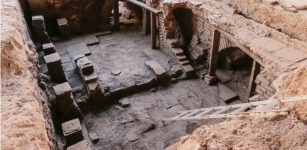 ‘Exceptional’ Ancient Roman Bath Complex Discovered In Mérida, Spain
Archaeology | Aug 21, 2023
‘Exceptional’ Ancient Roman Bath Complex Discovered In Mérida, Spain
Archaeology | Aug 21, 2023 -
 How The Great Sphinx Gave Thutmose IV Power To Become Pharaoh
Civilizations | Jul 19, 2021
How The Great Sphinx Gave Thutmose IV Power To Become Pharaoh
Civilizations | Jul 19, 2021 -
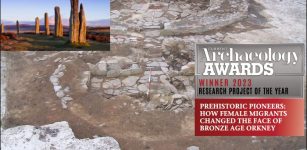 Impressive Study Highlights Female-Led Migration Into Bronze Age Orkney And Wins Prestigious Award For 2023
Archaeology | Apr 4, 2023
Impressive Study Highlights Female-Led Migration Into Bronze Age Orkney And Wins Prestigious Award For 2023
Archaeology | Apr 4, 2023 -
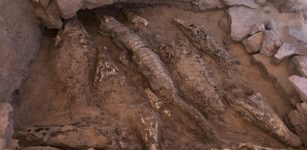 Mummified Crocodiles Provide Insights Into Mummy-Making Over Time
Archaeology | Jan 19, 2023
Mummified Crocodiles Provide Insights Into Mummy-Making Over Time
Archaeology | Jan 19, 2023 -
 Gorgo – Queen Of Sparta And Wife Of King Leonidas Broke A Secret Code And Stopped An Invasion
Featured Stories | Aug 5, 2019
Gorgo – Queen Of Sparta And Wife Of King Leonidas Broke A Secret Code And Stopped An Invasion
Featured Stories | Aug 5, 2019 -
 What Was Legio Martia And Why Were The Roman Soldiers Called The Martians?
Ancient History Facts | Jan 5, 2018
What Was Legio Martia And Why Were The Roman Soldiers Called The Martians?
Ancient History Facts | Jan 5, 2018 -
 Stunning Ancient Roman Artifacts And Three Shipwrecks Discovered Underwater Off The Coast Off Alexandria, Egypt
Archaeology | Nov 26, 2017
Stunning Ancient Roman Artifacts And Three Shipwrecks Discovered Underwater Off The Coast Off Alexandria, Egypt
Archaeology | Nov 26, 2017 -
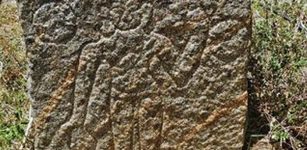 500-Year-Old Vaishnava Saint Sculptures Discovered
Archaeology | Oct 15, 2015
500-Year-Old Vaishnava Saint Sculptures Discovered
Archaeology | Oct 15, 2015 -
 Homo Longi: Extinct Human Species That May Replace Neanderthals As Our Closest Relatives
Evolution | Sep 14, 2023
Homo Longi: Extinct Human Species That May Replace Neanderthals As Our Closest Relatives
Evolution | Sep 14, 2023 -
 What Was Life Like For Children In Ancient Athens?
Ancient History Facts | Jul 4, 2018
What Was Life Like For Children In Ancient Athens?
Ancient History Facts | Jul 4, 2018 -
 Incredible Technology In Mysterious Huashan Caves, China
Civilizations | Feb 10, 2015
Incredible Technology In Mysterious Huashan Caves, China
Civilizations | Feb 10, 2015 -
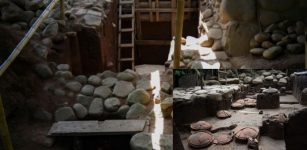 2,000-Year-Old Stela And ‘Laboratory’ Of Early Maya Writing Found In Guatemala
Archaeology | Mar 15, 2020
2,000-Year-Old Stela And ‘Laboratory’ Of Early Maya Writing Found In Guatemala
Archaeology | Mar 15, 2020 -
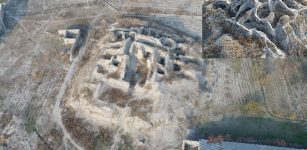 Sogdian Temple Of Jartepa II On Caravan Road Of The Silk Road
News | Sep 3, 2020
Sogdian Temple Of Jartepa II On Caravan Road Of The Silk Road
News | Sep 3, 2020 -
 Ullr – Famous Norse Archer – God Of Asgard And Fastest Skier Ever Known Who Taught People The Art
Featured Stories | Jan 10, 2020
Ullr – Famous Norse Archer – God Of Asgard And Fastest Skier Ever Known Who Taught People The Art
Featured Stories | Jan 10, 2020 -
 4,000-Year-Old Temple With Mysterious Large Monolith Discovered In Cyprus
Archaeology | Jul 10, 2024
4,000-Year-Old Temple With Mysterious Large Monolith Discovered In Cyprus
Archaeology | Jul 10, 2024 -
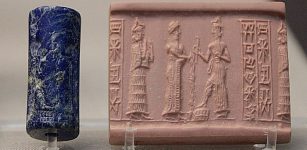 Shamash: Mesopotamian God Of Sun, Truth, Justice And Healing
Featured Stories | Jan 11, 2016
Shamash: Mesopotamian God Of Sun, Truth, Justice And Healing
Featured Stories | Jan 11, 2016

